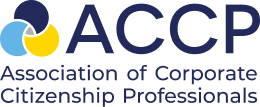Melissa Buchanan
SVP, Community Impact
LPL Financial
Corporate foundations are an evolving segment of the corporate social impact landscape. How they can be leveraged as part of the overall corporate purpose strategy, how they collaborate and support CSR and ESG efforts, and how they align and support corporate strategy are all topics of discussion within the ACCP community.
ACCP member LPL Financial recently took advantage of the ACCP CONNECT member benefit to learn how best to leverage their foundation.
Melissa Buchanan, SVP of Community Impact and LPL Financial Foundation, reached out to ACCP for assistance with making the most impact possible through their foundation.
Tell us about the LPL Financial Foundation and why you decided to reach out to ACCP for help.
LPL Financial is committed to caring for our employees, clients, and communities. Our employees and financial professionals bring this value to life wherever they are and in whatever they do. For over ten years, the LPL Financial Foundation has been a catalyst for their impact and has been dedicated to supporting great organizations making a difference in our communities.
In 2021, the LPL Financial Foundation Board, with the encouragement of our executives and our company’s Board of Directors, determined it was time to modernize and evolve the foundation so that we could move towards creating an impact based on our areas of expertise. To do this, we needed to tap into expert resources with access to best practices throughout the corporate philanthropy spectrum. This is where ACCP stepped in, and we were grateful for the consulting services Carolyn Berkowitz and Lacey Gaitan provided as a benefit of our ACCP membership.
We are now focusing on three pillars: increasing the financial services industry’s talent pipeline of underserved individuals, building the financial capabilities of underserved small business owners, and creating opportunities for LPL employees and financial professionals to support causes that are important to them.
What were some of the key outcomes in terms of transitioning and redesigning? What were the challenges you encountered?
One of our guiding principles for identifying our inaugural partners was finding organizations with the resources to teach us about our focus areas. While we knew the subjects, we were by no means the experts. The key to our success was finding organizations that could become true partners so that we could work together to create meaningful and mutually beneficial investments. The Local Initiatives Support Corporation (LISC) and the American College of Financial Services’ Center for Economic Empowerment and Equality were the perfect partners for us.
Our evolution did not come with additional funding; instead, we needed to do the work to identify existing partners who no longer aligned with our pillars. We wanted to be transparent and mitigate the immediate impact on these organizations. The Board approved a 3-year sunsetting strategy to ease the organizations’ decrease in funding, and we had conversations with each organization directly to help them understand the new direction and what this would mean for them.
How will you/have you gone about measuring the success of this foundation re-vamp?
It sounds minor, but one of the signs I see of our success is having a story to tell. We can go beyond transactional outputs and now paint the picture of where we were, where we are, and where we intend to be in the future. Communicating our focus areas and making them come to life by sharing real-life impacts helps us gain momentum and additional resources to continue the growth. (See this incredible story of a Charlotte-area entrepreneur our LISC grant helped support.)
What are some of the key takeaways you learned from this process?
- Bring your key stakeholders along with you from the beginning. The work is complex, and strategic community engagement is not always as easy as those outside the practice may think. Teach them along the way.
- Be patient and remember transformational change does not happen overnight.
- It’s better to spend the “right” amount rather than rush to spend “all” of the money.
- Be willing to experiment and accept the risk that a partnership may not be the right one in the long run.
- Always have data.
What tips would you give other companies looking to enhance their current foundation or create a new one?
Don’t underestimate the operational infrastructure needed to run a well-governed foundation. Bring data and research to help your leaders understand that great programs need to be adequately resourced beyond the grants that will go to the community. (ACCP is a great partner to help in Making the Case!)

